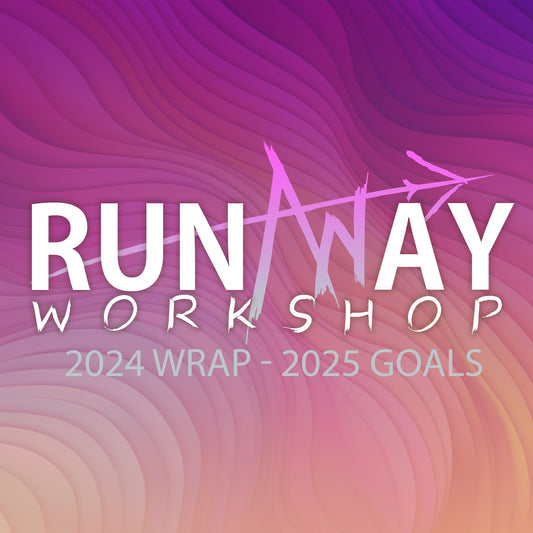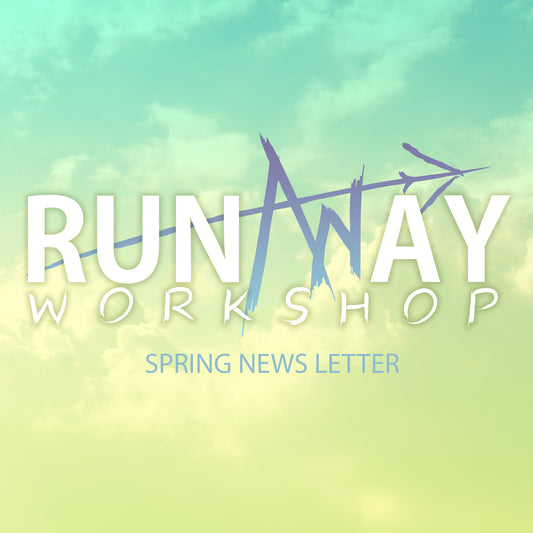Whether you're trying to make sure a pair of pre-made eyes will fit your base, or if you want to make a custom pair for your own base, getting the correct measurements is always important. As I always get a lot of questions about how to do it correctly, I have written out this guide to help you measure for your perfect pair of eyes.
It's useful to note though, if you're using a foam head base, the measurements will be a lot more forgiving than something more rigid like PLA or resin, not only because foam is more flexible but because you can easily cut it to allow the eyes to fit.
3D or Flat?

The first thing you need to consider is if you're using eyes with a flat back, or follow-me style eyes.

Follow me style: These need to sit on the inside of the socket as they have to be deep to get the following effect to work. This means that the hole has to be big enough to fit the whole eye

Flat back: these can be either flat all over, or curved on top and flat where it sits on the costume head. They don't need to sit directly inside the socket. If you want, you can attach them outside of the base sockets, then the hole for the eye just needs to be big enough to see through at a minimum and lined up to the Iris, which is the part that you will usually look through. (for sake of ventilation, I suggest not sticking to the minimum though)
Measuring your base:
Fitting eyes for a pre-made base is a lot easier because often there is a "standard size" that the maker can tell you (Just send them a message and they will likely help), or the lines are usually cleaner, which makes them easier to measure for yourself.

Hold your ruler or tape measure across the eye sockets and take note of the widest point of the eyes (The red line going across) and the tallest point (The blue line going down).
Make sure that the first edge is at zero on the ruler.
Check what number is at the end of the line you want to measure. if it finishes before another number, write down the last big number, and then count the small lines, which are millimeters, and write that down after the big number.
This, for example, measures at 6.5 cm across, and 5.5cm tall.

If these are the pre-made eyes I want to install, I need to check if the measurements for my eyes match up.

Those eyes are only 5mm too big, which is fine. Because it's a foam base, it will stretch to fit up to about 7mm. If the base was plastic, I would need to sand away some of the edges with a tool like a Dremel if I wanted them to fit. Or I could ask for a custom-sized pair of eyes (more on custom eyes further down)
what about the shape of the socket?
If the shape of the socket is different from all the pre-made eyes you can find, and you want a custom pair of eyes that fit exactly, you can trace the eye socket with a pen and paper.


(Important note: try to keep the paper as flat as possible behind the eye sockets to make sure the shape is accurate. it's a good idea to cut out the shape and test it in the socket to make sure it fits properly before sending the measurements over to the maker, or before cutting out the final material that the eyes will be made from)
Once you've drawn around the eye, you can measure the points as before (The widest and tallest) if you're making your own eyes, you can use this as a template, or if you're sending it to someone else who is making the eyes for you, note the measurements on the paper, scan or photograph the image and then send the image to the maker. They will be able to use the measurements on the paper to scale the template and make sure that the eyes fit your base.
Building your own base:
If you're building your own base from scratch, or have a different style eye in mind for the head base you're working with, then you can design the eye first and alter the sockets to fit later.
on a piece of paper or card, draw out the eye design you like in the correct size and measure across the lines as before. (This will give you a template to work with, or to send to the artist who is going to make the eyes for you)


As expected, these eyes don't fit this pre-made base yet, but that's okay because those are the eyes I want for my design, so I am going to make them fit by cutting the shape out of the base.
But as an example (because I don't actually want to use one of my bases for this tutorial) I have taken some spare foam to show the process, just imagine that this scrap foam is on a head base.

This is an eye socket I want to fit my new eye into. When you look at its shape, you can probably understand what I mean when I say "Design the socket for the eye, not the eye for the socket". Because If you traced around that particular socket and made an eye to fit it, it probably wouldnt look great in the end.
Take your design template and draw around it onto the foam (IMPORTANT: if you're using light-coloured fur, DO NOT USE dark ink on the foam base unless you can clean it off)



The eye should then fit into the socket.
If you're working with a plastic head base, you can use a cutting tool to adjust the eyes, but this is only recommended for experienced makers. some 3D-printed head bases can be adjusted before printing, so if you're looking at a 3D-printed base, try asking the maker if they can print the base to fit your own eye design.
Important things to remember:
If the eyes don't fit slightly, don't panic, something can always be done! If it's too big, you can fill the gaps with foam, as long as its firmly glued in place, you will not see the gaps after you fur the base. If the eyes are too big, you can cut the base as you need it.
Measure twice, cut once. Save yourself time and money by measuring multiple times to make absolutely sure you're ordering the right thing.
Be sure what you're buying. if you're buying anything premade, particularly eyes, check the measurements on the listing. If you're not sure, message the seller.
Be clear about what you want. This is very important when ordering custom shapes and sizes. send over clear, flat, drawings of the exact shape, with written measurements. let the maker know if the measurements are in CM, MM or Inches. Photos with no measurements on are impossible to judge sizes.




